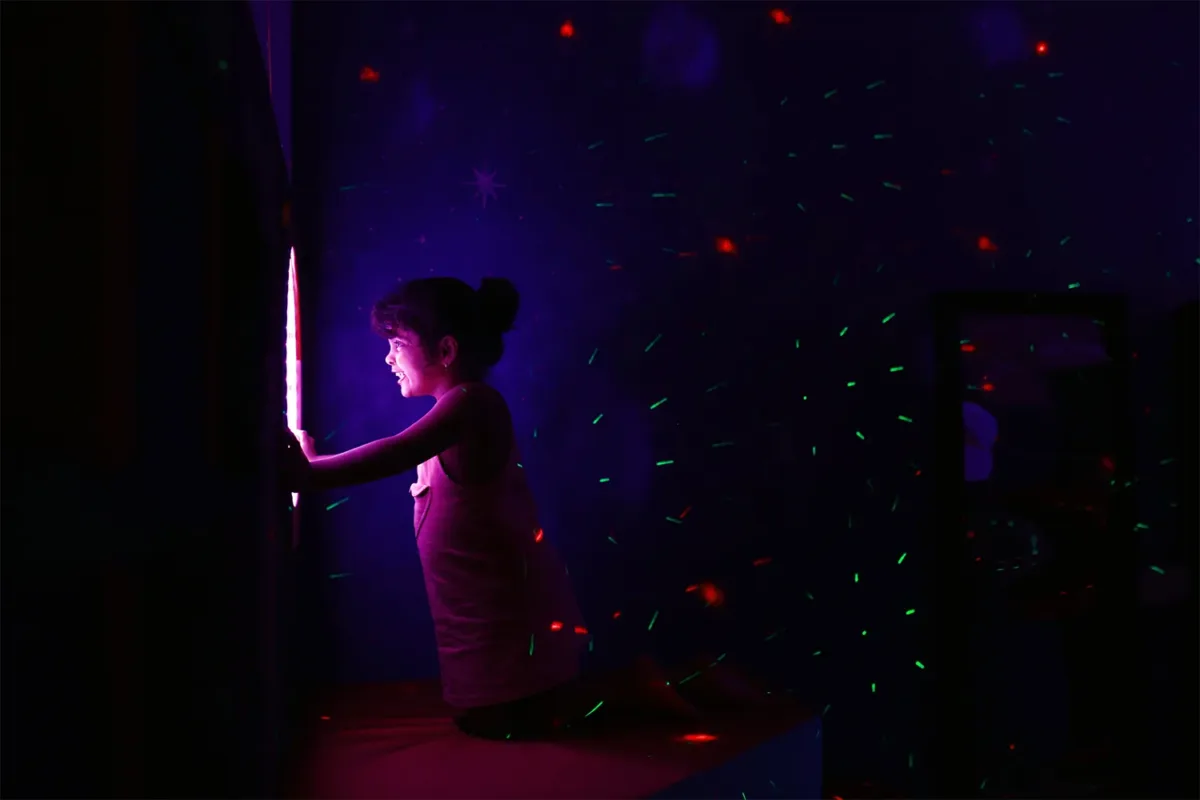What Is Sensory Integration Therapy?
The term “sensory integration” refers to the processing, integration, and organisation of sensory information from the body and the environment. Simply put, this means how we experience, interpret and react to (or ignore) information coming from our senses. Sensory integration is important in all the things that we need to do daily, such as getting dressed, eating, moving around, socialising, learning and working.
Sensory Integration Therapy is a type of occupational therapy that is designed to help individuals who have difficulty processing and responding to sensory information. This therapy involves exposing individuals to various sensory experiences, such as touch, sight, sound, and movement, in a structured and supportive environment.
The goal of this therapy is to improve the individual’s ability to process and respond appropriately to sensory input, leading to better coordination, attention, and overall functioning. Sensory Integration Therapy can be beneficial for individuals of all ages who experience sensory processing difficulties, including those with autism, ADHD, and other developmental disorders, as well as individuals who have experienced trauma or injury. Through sensory integration therapy, individuals can improve their ability to engage with their environment, leading to a more fulfilling and functional life.
During Sensory Integration Therapy, the therapist works with the individual to create a personalized plan of sensory activities that are appropriate for their specific needs and goals. These activities may include things like swinging, bouncing on a therapy ball, playing with tactile materials, and engaging in physical challenges such as climbing or balancing. The therapist guides the individual through each activity, providing support and feedback as needed.
The goal of Sensory Integration Therapy is to help the individual become more comfortable and confident in their ability to process and respond to sensory information. This can lead to improvements in a wide range of areas, including communication, social interaction, and academic performance. For example, a child who has difficulty with sensory processing may struggle with focusing in class, making friends, and participating in sports or other physical activities. Through Sensory Integration Therapy, they may learn new coping strategies and improve their ability to engage with their environment, leading to a better quality of life.
Sensory information is received from our senses, which include:
- Sight (vision)
- Hearing (auditory system)
- Touch (tactile system) Taste (gustatory system)
- Smell (olfactory system)
- Proprioception (senses of body awareness and position)
- Vestibular (awareness of movement, balance, and coordination)
- Interoception (our internal sensory system that tells us what is happening inside our body, for example, hunger, needing the toilet, fatigue, emotions, etc)
Sensory integration therapy is a program usually led by occupational therapists. For example, an occupational therapist might design and implement an individual program of sensory experiences for an autistic child.
Sensory integration therapy is used to help children learn to use all their senses together – that is, touch, smell, taste, sight and hearing. It’s claimed that this therapy can improve challenging behaviour or repetitive behaviour. These behaviours can be related to difficulties with processing sensory information.
Therapists also sometimes suggest that sensory integration therapy can help with other autism characteristics, like difficulties with play and emotional regulation. Some forms of sensory integration therapy are called Ayres Sensory Integration (ASI) intervention. This type of sensory integration therapy tends to focus on goals and is more systematic than other types of sensory integration therapy.
Parents may recognize their child’s behaviour is not typical. But most parents may not know why. Don’t be afraid to discuss your child’s behaviour with your doctor. He or she may refer you to an occupational therapist. These professionals can assess your child for SPD. He or she will likely watch your child interact in certain situations. The therapist will ask your child questions. All of these things will help make a diagnosis.
Unique Approach of Jeevaniyam, The Best Autism Treatment Hospital In Kerala
At Jeevaniyam, sensory integration therapy starts with an assessment of the child by our best occupational therapist. The therapist then plans and conducts a program that includes activities to stimulate sensory responses from the child – in particular, responses to do with balance and physical movement. This might include things like swinging, bouncing or climbing. Sensory integration therapy is designed to be part of wider programs that also include communication, behaviour and educational therapies.

